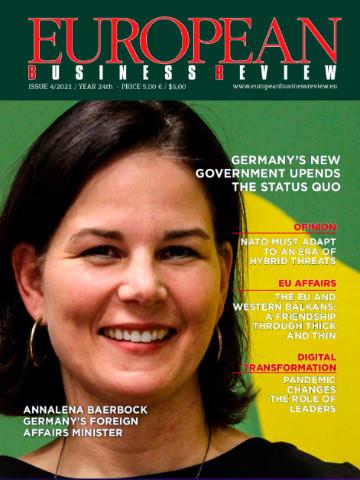EU–China Joint 5G plans: From words to deeds
5G, the next generation of mobile communications technology, will offer dramatic improvements over its predecessors when it becomes standard in 2020

Therefore, the third thing we must do by 2020 is redefine network capabilities. Carriers need to establish software-defined architecture, achieve agile operations and develop Big Data operation capabilities.
by
Tony Graziano*
Dramatic means around 100 times faster with 1000 times greater data transfer capacity, connecting some 100 billion devices by 2025. The impact will be dramatic.
It will also form the backbone of the digital society, enabling a trillion-euro EU market driven by the Internet of Things (IoT), connecting everything from cars to smart homes.
This is why the EU’s recent landmark agreement with China to cooperate on 5G research, will prove pivotal in turning the vision for wireless mobile communications into reality. It will drive progress in areas crucial to 5G development - a global 5G vision, standardisation, spectrum use as well as joint R&D.
The research agreement will create vital synergies, since both blocs are investing heavily in 5G at both public and private sector levels. The EU is dedicating €700m to a 5G Public Private Partnership through its Horizon 2020 research and innovation programme; EU industry is set to match this with a further €3bn.
The joint EU-China projects under the 5G agreement will use a general co-funding mechanism (CFM) for research and innovation set up by the two blocs, worth some €640m from 2016 to 2020. In December 2015, the Chinese ministry of science and technology (MOST) made its first annual call under the CFM to provide €28m support for Chinese organisations wishing to participate in Horizon 2020.
With 2020 just around the corner, it is vital that preparations for the new 5G markets begin now if we are going to capitalise fully on the technology. There are three key aspects; increasing connectivity, boosting vertical industries and redefining network capabilities.
By 2025, roughly 55 per cent of the 100 billion connections will stem from business applications such as smart manufacturing and smart cities, with the remainder in consumer areas such as smart homes, the Internet of Vehicles and wearables. However, 99 per cent of all equipment is currently unconnected to the internet; we must increase the number of connections supported.
International shipping is an example of how additional connections can increase efficiency of an entire industry. Adding a special connected lock to containers (and even small parcels) will enhance efficiency and security and improve logistics. By integrating GPRS, GPS and RFID technologies, the lock can provide information on location and progress and provide digital proof of integrity. 5G will allow make such tracking and communications entirely mainstream.
With the EU as China's biggest trade partner and China as the EU's second largest, both sides stand to gain. Strategic thematic areas for enhanced cooperation under the CFM will include transportation, advanced manufacturing, energy, health, new materials and sustainable urbanisation.
With the shift from supply-driven business models to customer demand driven, vertical industries need new business models to enable the digital transformation. ICT providers must strive to achieve a customer experience that caters to different industries’ individual needs. 5G will pave the way for new business models and value propositions between vendors, operators and verticals through the integration of various access, transmission and network technologies.
Car connectivity offers a perfect example. As cars increasingly become smart devices, the ICT and automotive industries need to join forces to deliver products that meet customer expectations. Huawei aims to be a key player making the Internet of Vehicles a reality. The company is working with industry partners in Europe and China to drive 5G development as a key enabler of car-to-car connectivity.
To keep up with the demand required to offer such services, 5G networks will need to integrate high bandwidth requirements into public networks and use virtual private networks to provide services.
Therefore, the third thing we must do by 2020 is redefine network capabilities. Carriers need to establish software-defined architecture, achieve agile operations and develop Big Data operation capabilities.
Achieving 5G demands increased connectivity, new business models and new business value. Giving structure to strategic cooperation between Europe and China is a prerequisite to the successful implementation of this three-pronged approach.
Huawei is investing heavily in 5G R&D and is promoting dialogue between China and Europe. It is a key player in the joint EU-China cooperation initiative, investing $600m in 5G research worldwide and participating in several flagship Horizon 2020 projects. The company is a Board Member of the 5G Infrastructure Association, which brings together the companies on the private side of the EU’s 5G Public Private Partnership (5G-PPP).
To speed progress on both sides, Huawei proposes going a step further and establishing a business-led organisation for EU-China cooperation in 5G. This would encourage collaboration between key companies with a focus on the strategic areas of IoT and car connectivity.
We look forward to taking our fruitful collaboration further, making 5G a reality and building a better-connected world.
*Tony Graziano is Vice-President of European Public Affairs and Communication Office at Huawei
**This article was first published in Huawei Europe Newsletter – May 2016



 By: N. Peter Kramer
By: N. Peter Kramer

